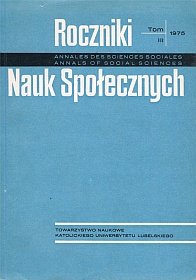Nowa Huta na tle procesów urbanizacyjnych Polski powojennej
Abstrakt
After the Second World War Poland became a country of rapid progress of industralization and urbanization. Three factors determine a considerable rise in the urban population: migration from the village to the town, a very high birth rate in the years 1946-1960 and the changes Of administrative boundaries of towns Each of these factors was acting with various force at different stages of Polish development. Many industrial investments were undertaken simultanously with urban and estate investments. Nowa Huta near Krakow is a good example of this. The author sees Nowa Huta as a symbol of post-war industrial and urban changes in Poland. In Nowa Huta we have a phenommenon of modern urbanization which consists in the erection and development of a town with the construction of an industrial plant. Industry is here a principal or even the only factor which causes the growth of a town. The rise of this enormous industrial plant, absorbing the extra labour power, had to change the character of Kraków and had to create a big Poland. In Nowa Huta we have a phenomenon of modern urbanization which could influence the changes of structures and social conditions in the town. Now, Nowa Huta has about 190 000 inhabitants. It became a self-sufficient urban organism. The population coming from the rural region amounts to 2/3 of the Nowa Huta's population. The youth under 24 years constitutes half of its population.
Copyright (c) 1975 Roczniki Nauk Społecznych

Utwór dostępny jest na licencji Creative Commons Uznanie autorstwa – Użycie niekomercyjne – Bez utworów zależnych 4.0 Międzynarodowe.


